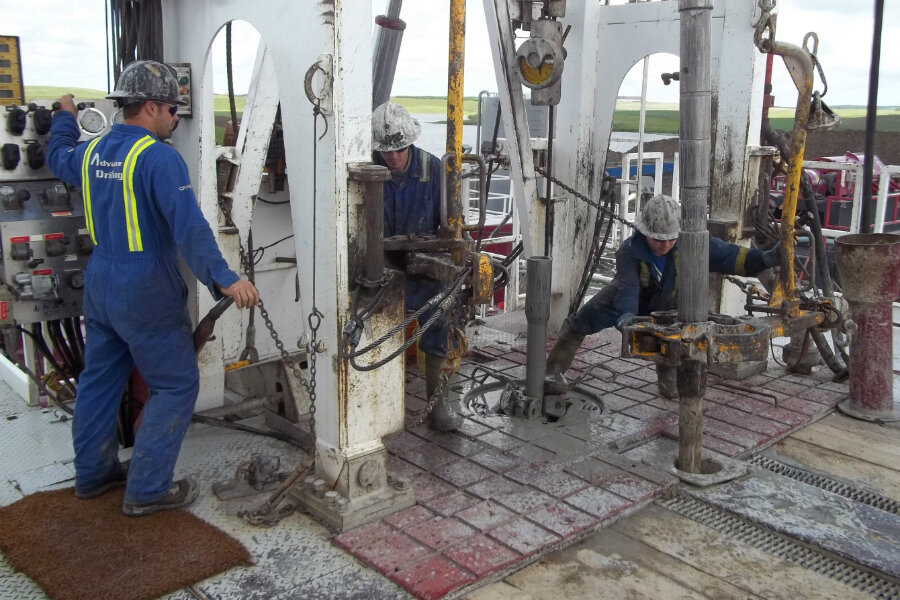Low prices at the pump point toward domestic energy slump
Loading...
| Billings, Montana
US officials announced plans Thursday to speed up the permitting process for oil and gas drilling on federal lands to reduce delays, as applications were projected to be down 40 percent in coming years versus their historical average amid an ongoing price slump.
Low energy prices already have curtailed domestic energy exploration, driving down revenue. That's put a crimp in budgets for major energy producing states, including Wyoming, Alaska, North Dakota and Montana, which receive a substantial share of revenue from oil and gas activity on US lands.
In an attempt to streamline drilling approvals and reduce costs for companies, US Bureau of Land Management Director Neil Kornze said all drilling applications would have to be filed online under the new proposal.
"The new system is a big improvement over the current, hardy copy-based application system," Mr. Kornze said in a statement.
The move follows years of criticism from the energy sector over the Obama administration's handling of drilling applications. Industry groups say lengthy delays have driven up costs.
Online-only permitting would allow 90 percent of drilling applications to be completed within 115 days, bureau spokeswoman Bev Winston said. The average time in 2015 was 220 days.
It's uncertain how much the move could stimulate new exploration, which is driven predominantly by oil and gas prices that have fallen dramatically over the past two years.
The historically low gas prices, however, could boost the economy in other ways, Ben Rosen reports for The Christian Science Monitor.
A combination of low crude-oil prices and a high supply of refined oil have slashed gas prices to their lowest levels for July since 2004. The national average is $2.18 – 57 cents lower than a year ago. And the report said these prices will increase buyers’ appetites for gas-guzzling trucks and SUVs.
Oil was selling for less than $43 a barrel Thursday on international markets, versus more than $100 a barrel as recently as mid-2014.
Federal revenues from oil, natural gas and natural gas liquids dropped below $9 billion in 2015. In 2014, the figure topped $12 billion.
Onshore production accounted for about half that amount.





